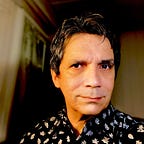The Week of March 7, 2021: On this Day in SCOTUS HISTORY
This week we will look at the freeing of slaves, separation of church and state, freedom of the press, and the link between crime and poverty, as well as the death of Clarence Darrow.
1841, March 9
United States v. The Amistad, 40 U.S. 518 (1841)
In 1839, a pair of Spanish slave traders sailed from Havana, Cuba on the way to Puerto Principe, Cuba, with a group of Africans kidnapped from Sierra Leone and purchased in Havana. En route, the “slaves” escaped their shackles, killed three men, and took over the ship. The ship was subsequently captured off the coast of New York by U.S. forces. This case is about the fate of the 35 “slaves” onboard. Many interests were involved, including, among others, the slave traders and the country of Spain.
The Court held that the kidnapped Africans must be freed. This case was decided 20 years before the start of the U.S. Civil War. I highly recommend watching the video and reading the fascinating opinion to understand the various questions that were under consideration.
The full Supreme Court opinion is available at https://supreme.justia.com/cases/federal/us/40/518/.
I have included here a video about The Amistad case from Mr. Beat on YouTube. (I also recommend the movie Amistad, released in 1997 and directed by Steven Spielberg with a star-studded cast and a breakout performance by Djimon Hounsou.)
One interesting detail that is not noted in the video: The freed Africans were to be sent back to their home country of Sierra Leone. The trip was delayed, and money for the trip had to be collected by an abolitionist group, because President John Tyler, himself a slaveowner, refused to allocate public funds for the trip.
1948, March 8
McCollum v. Board of Education, 333 U.S. 203 (1948)
The public schools in the district of Champaign, Illinois provided voluntary religious education classes — Protestant, Catholic, and Jewish — on school property and during school time. An atheist family challenged the practice on the grounds that it was unconstitutional under the 1st Amendment Establishment Clause and the 14th Amendment Equal Protection Clause.
Held: This utilization of the State’s tax supported public school system and its machinery for compulsory public school attendance to enable sectarian groups to give religious instruction to public school pupils in public school buildings violates the First Amendment of the Constitution, made applicable to the states by the Fourteenth Amendment.
The full Supreme Court opinion is available at https://supreme.justia.com/cases/federal/us/333/203/
I have included here a video about the McCollum case from the Chicago Humanities Festival on YouTube. Note the controversy that surrounded this case. Consider also how these holdings might be revisited now with the new makeup of the Supreme Court which includes a conservative majority.
1964, March 9
New York Times Co. v. Sullivan, 376 U.S. 245 (1964)
An elected official brought suit alleging that he had been libeled in an advertisement published in the New York Times. The advertisement included inaccurate statements regarding the actions of public officials. The original lawsuit was filed against various parties including the newspaper and the individuals who wrote the advertisement.
Question: Whether this rule of liability, as applied to an action brought by a public official against critics of his official conduct, abridges the freedom of speech and of the press that is guaranteed by the First and Fourteenth Amendments.
Held: A State cannot, under the First and Fourteenth Amendments, award damages to a public official for defamatory falsehood relating to his official conduct unless he proves “actual malice” — that the statement was made with knowledge of its falsity or with reckless disregard of whether it was true or false.
Also held: Just because it was a paid advertisement does not mean it is not entitled to the same protections.
The full Supreme Court opinion is available at https://supreme.justia.com/cases/federal/us/376/254/#tab-opinion-1944787 .
This video by Quimbee provides a very good explanation of the case.
1938, March 13
The Death of Clarence Darrow (April 18, 1857 — March 13, 1938)
Clarence Seward Darrow was an attorney best known for his defense of teacher John T. Scopes in the Scopes “Monkey” Trial (1925), and the teenage “thrill killers” Leopold and Loeb for murdering 14-year-old Robert “Bobby” Franks (1924). Darrow worked for labor unions before turning his attention to criminal law. Darrow’s criminal defense work was fueled by his vehement opposition to the death penalty.
I have included two videos here. One is a brief 3-minute portrait. The other is a rare 1932 interview with Darrow in which he shares his philosophy on the causes of crime. This second video is not of the best quality, but it is well worth the time and effort.
MAHALO MUCHO!
You can contact the author through his LinkedIn page: https://www.linkedin.com/in/ronalddrodriguez/
